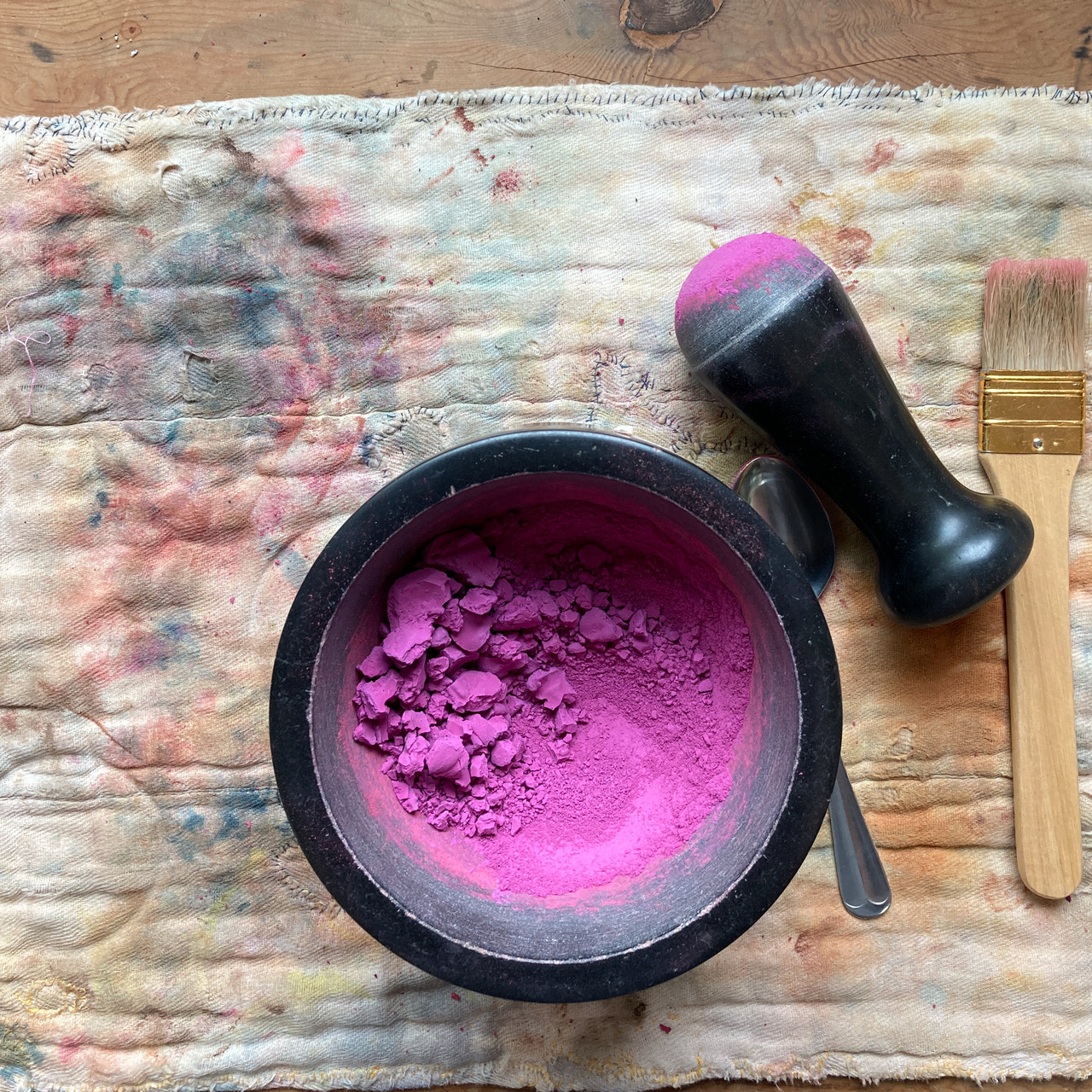
Description
Dye plants aren’t just for textiles. They are also a rich source of color for artists working on paper. Have you been wondering how you can incorporate plant color into your creative practice? From botanical inks to lake pigment watercolor paints, we will learn a variety of techniques for collaborating with the plants around you. We’ll discuss ethical harvesting, growing plant color from seed or starts, as well as where to purchase traditional dye plant material. We will make tried-and-true inks with oak galls and walnut hulls. Then, we will do some simple chemistry to turn plant dye into insoluble pigments called ‘lake pigments,’ using non-toxic, readily available ingredients. Lake pigments can be used to make almost any artist material, from pastels to watercolor paints. Participants will leave with a full spectrum of botanical color in the form of botanical inks and watercolor paints, and the knowledge to make more.
About the Instructor
Carolyn Sweeney is an artist living in Portland, Oregon who began making her own natural inks and watercolors as a part of her ongoing engagement with the natural world. Through several years of experimentation she developed recipes and techniques specific to locally foraged materials. In the fall of 2020 Carolyn launched Strata Ink releasing a line of hand foraged mineral and botanical inks. She teaches classes on mineral pigment watercolors, botanical inks, and crayon making. Carolyn has a B.A. in Fine Art from Whitman College and a background in a wide array of textile arts from Oregon College of Art and Craft.
Learn More
www.carolynsweeney.com
Materials List
You will need to bring:
Artist paper: A variety of types and sizes, including but not limited to watercolor paper.
Water-based media brushes: A variety of types and sizes, including one wide absorbent brush. Inexpensive is fine!
Small containers with lids: For possible leftover workshop materials.
Notebook and pencil: For taking notes.
Water cup: For rinsing your brush when painting.
A few rags: For cleaning up messes or wiping brushes.
Dust mask: For working with dry pigments, preferably a respirator-type mask.
Provided by instructors:
Plant material
Pots
Spoons
Strainers
Lake pigments
Paint pans
Ink bottles
Mulling slabs
Paint mullers
Watercolor binder
Studio supplies